Since dogs don’t have thumbs, they often explore the world using their mouths. While many dogs learn that people don’t like having their wrists nibbled or their clothes pulled on, some dogs continue mouthing people throughout their lives.
When your dog mouths you, is he being affectionate or aggressive — or something else entirely?
Let’s explore what dog mouthing means.
Why Does My Dog Mouth Me?
As with most “why does my dog…” questions, we can’t really be 100% sure why your dog mouths you. But we can make some good guesses based on the circumstances around your dog’s behavior.
In other words, we might be able to figure out why your dog mouths you if we look at what happens right before and right after your dog mouths you.
Either something in the environment causes your dog to mouth you, or something that happens after your dog mouths you rewards his behavior — or both.
When people say their dog is mouthing them, they generally mean that their dog is putting his mouth and teeth on their body with very little (or no) pressure. Mouthing generally doesn’t hurt and generally isn’t considered aggressive.
There are generally two different “types” of dog mouthing:
Type 1: Play Mouthing
This type of mouthing is the most common. When a dog greets someone, is excited about playtime, or is amped up about something else, he may mouth at your hands, wrists, or clothing.
Generally, these dogs will jump and wag their tails. You might feel their canines or molars when they mouth you.
This mouthing is somewhat similar to the common “jaw wrestling” play style that many dogs enjoy. Mouthing in this case may be considered a stress release or a game. This is more common in dogs that are easily excited and don’t seem to know what to do with that excitement.
Play mouthing can get out of hand when a dog does it incessantly or increases pressure as he gets more excited.
When I worked at Denver Dumb Friends League, an animal shelter, we often struggled with young dogs that got very excited about their daily walk and mouthed the volunteers. Sometimes, these playful pups accidentally broke skin on their handlers. Not good!
Type 2: Grooming Nibbles
Far less common is the “grooming nibble.” Some dogs will attempt to groom other animals, their toys, or even you by gently nibbling with their incisors. This is generally considered to be an affectionate behavior that a dog does towards someone that he trusts.
You won’t feel a dog’s molars or canines when he’s doing a grooming nibble. These dogs are generally relaxed, not jumping and wagging their tails like the excited play-mouthers.
Most dogs mouth you because they’re simply too excited about something. In some cases, they may be aroused by a treat in your hand – in which case you work on teaching your dog to take treats gently.
Other times they may be amped up due to play or some other stimulus. They don’t have great manners or good impulse control. They know that mouthing you gets attention, so they keep it up.
As I said above, the majority of dogs fall into the first category of play mouthing. While this behavior is entirely normal and is generally not aggressive, it can still be quite annoying! Let’s look at how to deal with it.
Should I Let My Dog Mouth Me?
The answer to this question is really up to you. If your dog only mouths you gently and at specific times, you might not mind this behavior. It can be quite endearing for some owners.
However, if your dog is big and slobbery and mouths you all the time, I bet you aren’t a fan of this behavior!
Let’s be clear here: mouthing is not a dominance behavior. Dominance is related to a dog’s access to a resource in a given situation. Mouthing you has little or nothing to do with acquiring a resource, so dominance is a pretty irrelevant subject here.
If your dog is not mouthing you in a playful way, but is actually fixated on putting his mouth on you or is putting hard pressure on you, he might not be play mouthing. He could be giving you a warning bite — and just because it doesn’t break skin doesn’t mean “he didn’t mean it.”
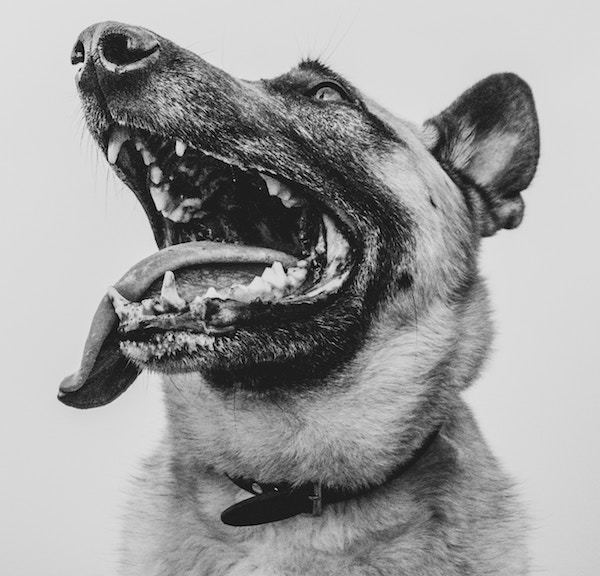
If you believe that your dog might be actually warning you that he’s uncomfortable rather than playing with you in a rude way, it’s time to get help. You can read all about aggressive dogs here, and it’s best to get help from a certified dog behavior consultant if you’re truly worried.
I’d Like My Dog to Stop Mouthing Me – How Do I Teach Him That?
While some moderate mouthing might not bother some of you, for others, dog mouthing can be a real problem. It can be painful, gross, or even scary — especially for guests or kids.
One great method to prevent mouthing is to focus on teaching your dog to do something else instead. This is referred to as response substitution, and our goal is to make that new behavior more rewarding to perform than the original unwanted behavior.
My favorite solution for dog mouthing is to teach the dog to greet someone and play with people while holding a squeaky toy.
You can do this by simply giving the dog a toy before he starts to mouth people, then playing with the toy (some tugging is a great start) to remind your dog that he should chomp the toy, not you!
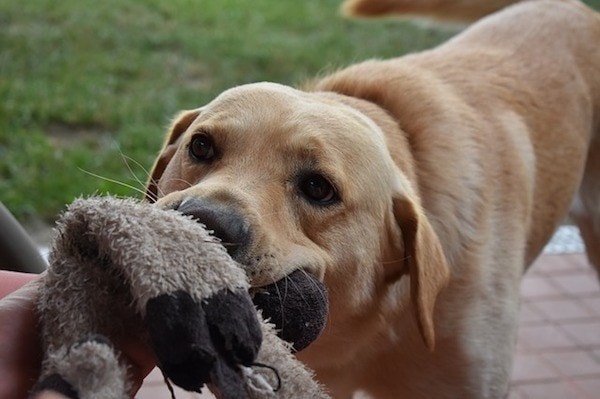
This works wonders for most dogs. They quickly learn that the squeaky toy is much more fun than people’s arms.
You may also want to read our article on puppy play biting, which overlaps somewhat with mouthing affection, with puppies exhibiting even less mouthing control than adult dogs!
How to Stop a Dog Who is Already Mouthing Me
Ideally you’ll want to catch your dog before he begins mouthing you, and redirect him to a toy.
Take some time to think about when your dog mouths you — what is happening in the environment that is amping him up so much that he feels the need to mouth on you? Preparing ahead and predicting when these behaviors might occur will allow you to better redirect your dog before mouthing becomes an issue.
There will likely be times when you don’t move fast enough or don’t predict your dog well enough and have situations where your dog has begun to mouth at you. You don’t want to reward your pup for biting (even if it’s playful) by giving him a toy. So now what?
In this case, you’ve got two main options:
Option 1: Leave The Room
If your dog is mouthing you or someone else, they can (and should) leave the room. You can simply stand up if the dog is small and won’t go after your shoes.
But if the dog is big or persistent, go to another room and close the door for 10-20 seconds. This removes whatever reward your dog was getting from mouthing you, teaching him that mouthing you doesn’t get him anything fun.
If your home has a more open design, you’ll likely want to utilize dog gates to separate your home into more manageable spaces that can be used to contain your dog more easily. This way you can simply step over a gate to leave the room when your dog begins mouthing at you.
When you come back, come prepared with treats so you can scatter them on the ground to distract your dog, along with a toy. Re-engage your dog in play with the toy. So long as he behaves, you’ll keep playing with him and engaging with him. But if he mouths at you, you’ll leave again. Rinse and repeat.
Soon your dog will learn, fun only happens when he doesn’t mouth at you!
Option 2: Remove the Dog
Sometimes, it’s easier to put your dog away than it is for you to leave. For example, if your dog is mouthing you while you try to cook dinner, you might not want to exit the room and risk burning your food. Instead, put your dog in her crate, outside, or in another room for a short time-out. Then try again.
As always, try to be calm and consistent. If something isn’t working, don’t keep repeating it — try to add something else that makes it easier for your dog. Don’t just ignore your dog, either. That’s likely to make you an easy target!
Treat scatters (simply tossing treats on the floor) are a great way to help calm a dog down and reduce mouthing. It’s best to do this before the dog starts mouthing you so that he doesn’t learn to mouth you to “ask for” treats!
Common Mistakes When Correcting Dog Mouthing Behavior
Let’s wrap up by covering a few mistakes that are commonly made when pet parents are working on reducing mouth behavior.
- Moving too much. Make sure that you move the toy more than you move your hands and feet. Dogs are naturally attracted to what moves, so if you flail your arms trying to avoid the dog, your arms become exciting.
- Ignoring the dog when he’s being good. Too often, we scold our dogs for being bad and ignore them when they’re good. If you catch your dog playing or saying hello politely, reward that good behavior! Otherwise, it’s likely to disappear. If your dog gets a reaction from you for biting your arms and is ignored when he’s got a toy, he’s going to go for your arms instead.
- Scolding, hitting, or scaring the dog for mouthing. Many dogs that enjoy play-mouthing actually like the attention that they get from it. Scolding your dog often works as attention that they like, even if you’re trying to be stern. If you are stern or scary enough, you’re actually likely to either scare your dog or make your dog bite harder. Avoid confrontational training methods when trying to stop your dog from mouthing you.
- Squealing or crying to stop a dog from mouthing. This is very common advice online, but it’s not always successful. Some dogs may stop if you cry out, seeing it as a sign of pain. But many others will become more excited and aroused at your noises, which sound like playful noises or even like a squeaky toy to them! Instead, it’s best to reward your dog with less interaction and response, not more.
Does your dog mouth you? Do you like it or wish it would stop? Share your dog’s mouthing stories in the comments!
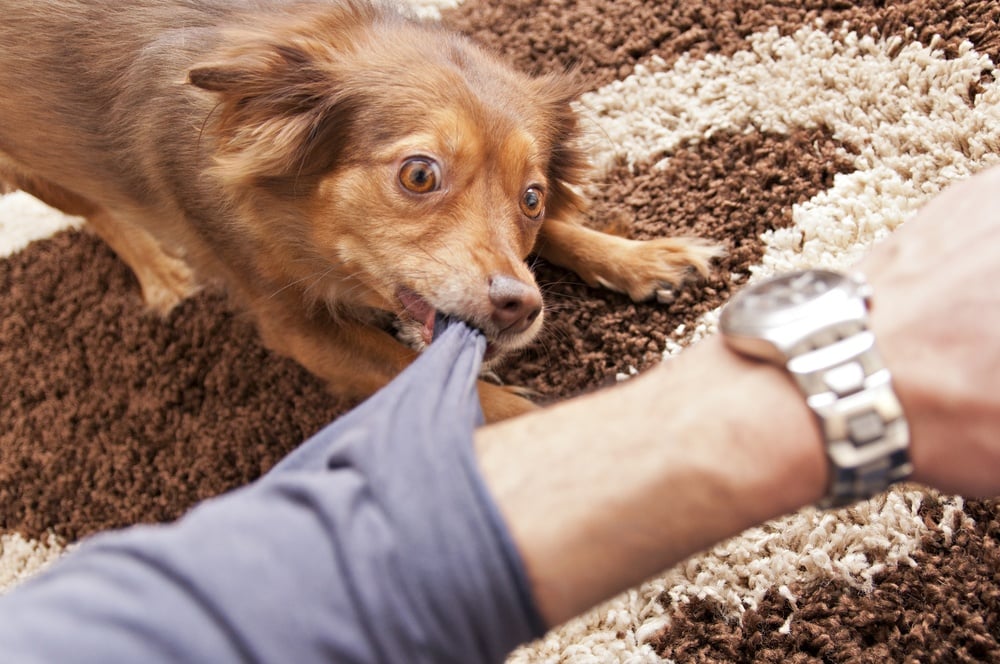



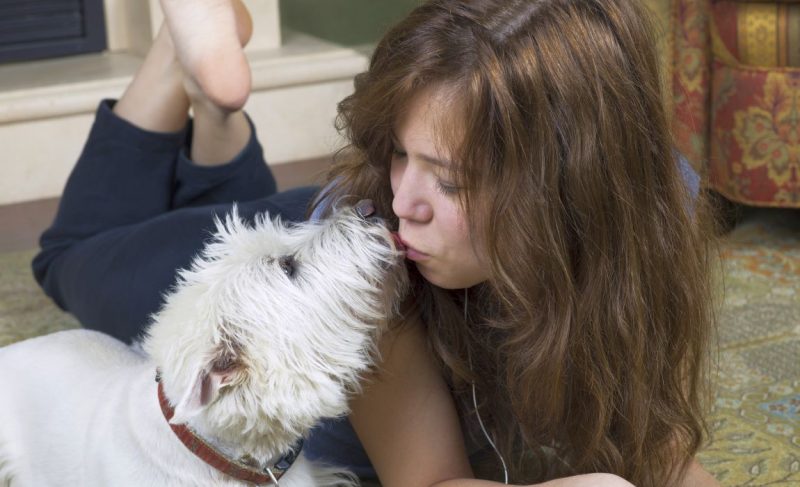
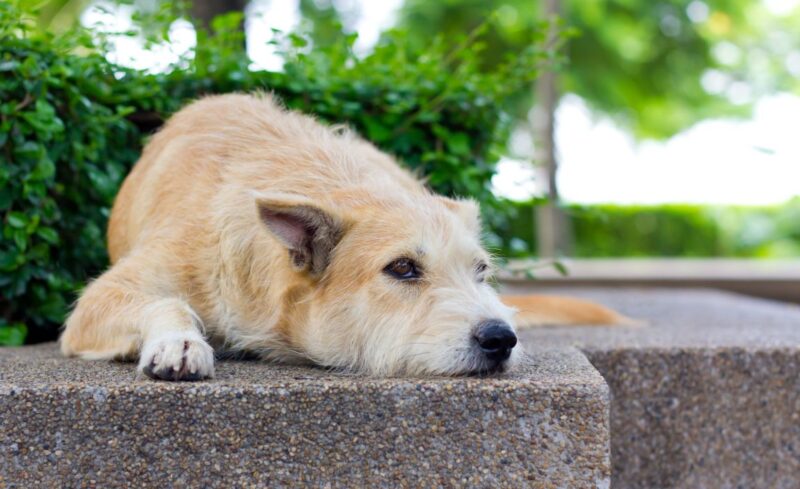
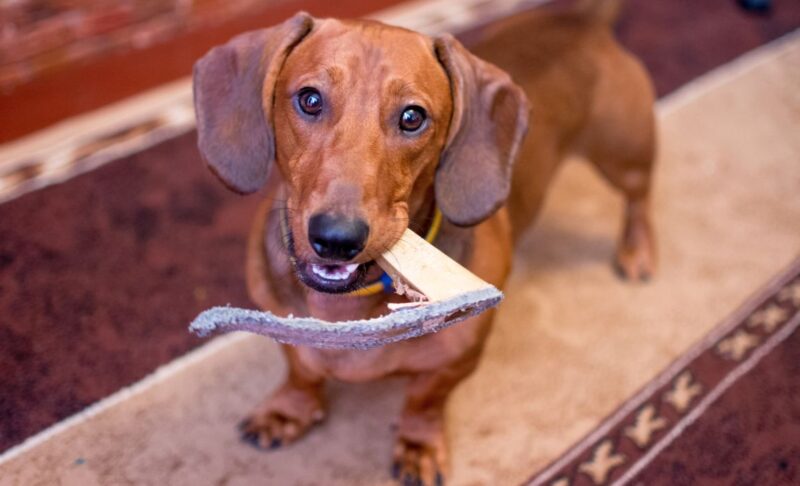

Leave a Comment